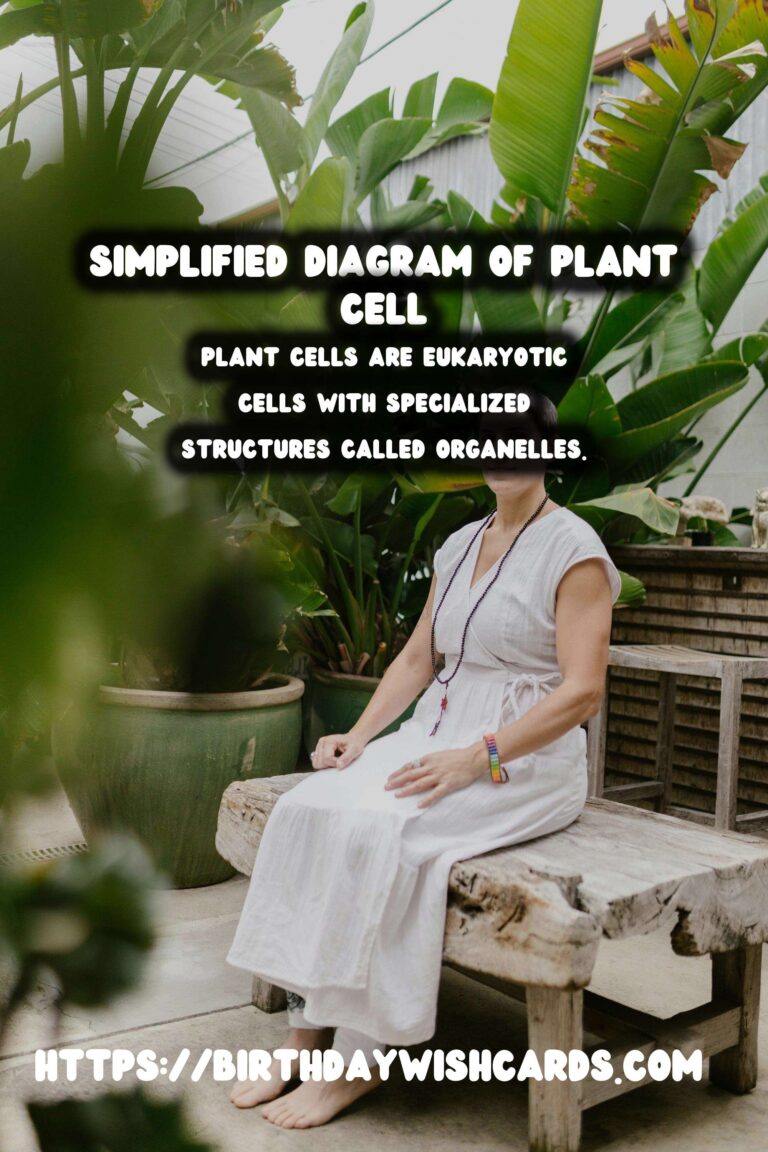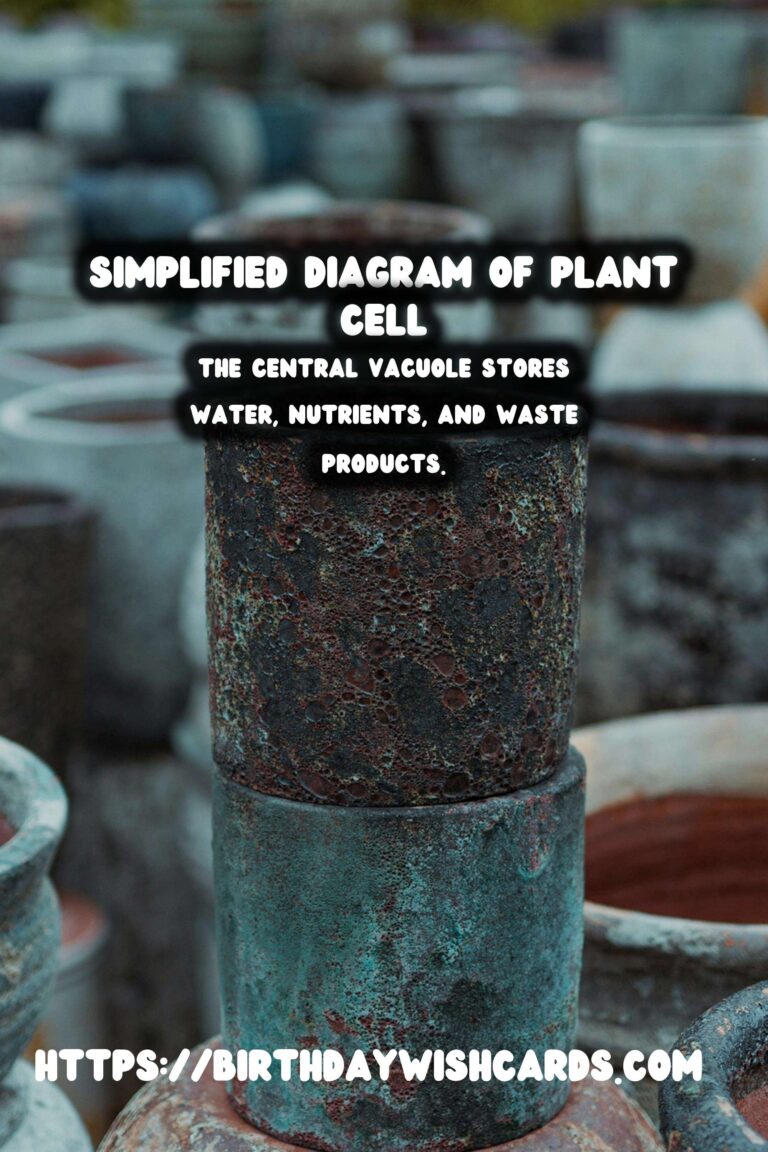
Plant cells are the basic building blocks of plant life. Understanding the structure of a plant cell is essential for anyone interested in biology, botany, or any field that involves plant sciences. This article will guide you through the essential components of plant cells and provide a simplified diagram to help you visualize these structures.
What is a Plant Cell?
Plant cells are eukaryotic cells, which means they have a true nucleus and specialized structures called organelles that perform distinct functions. Unlike animal cells, plant cells have a rigid cell wall, chloroplasts, and a large central vacuole.
Key Components of Plant Cells
Cell Wall
The cell wall is a rigid layer that surrounds the plant cell. It provides structural support, protection, and helps maintain the shape of the cell. The cell wall is composed mainly of cellulose, a carbohydrate polymer that gives the cell its strength and rigidity.
Cell Membrane
Just inside the cell wall is the cell membrane, a semi-permeable membrane that regulates the movement of substances in and out of the cell. It is composed of a phospholipid bilayer with embedded proteins that assist in transport and communication.
Nucleus
The nucleus is the control center of the cell, containing the cell’s genetic material (DNA). It regulates cell growth, metabolism, and reproduction. The nucleus is surrounded by a nuclear envelope, which protects the DNA and allows the transport of molecules in and out of the nucleus.
Chloroplasts
Chloroplasts are the sites of photosynthesis in plant cells. They contain chlorophyll, the green pigment that captures light energy and converts it into chemical energy. Chloroplasts have their own DNA and are believed to have originated from ancient symbiotic bacteria.
Vacuole
The central vacuole is a large, membrane-bound compartment that stores water, nutrients, and waste products. It helps maintain turgor pressure against the cell wall, which is crucial for maintaining the plant’s structural integrity.
Mitochondria
Mitochondria are known as the powerhouses of the cell. They are responsible for producing energy (ATP) through cellular respiration. Mitochondria have a double membrane and their own DNA, similar to chloroplasts.
Endoplasmic Reticulum
The endoplasmic reticulum (ER) is a network of membranes involved in protein and lipid synthesis. The rough ER is studded with ribosomes, which produce proteins, while the smooth ER is involved in lipid synthesis and detoxification processes.
Golgi Apparatus
The Golgi apparatus modifies, sorts, and packages proteins and lipids for storage or transport out of the cell. It is often considered the shipping and receiving center of the cell.
Simplified Diagram of a Plant Cell
A simplified diagram of a plant cell can help you visualize the arrangement and function of these components. In a typical diagram, you’ll see the cell wall, cell membrane, nucleus, chloroplasts, vacuole, mitochondria, endoplasmic reticulum, and Golgi apparatus labeled clearly to show their positions and relationships.
Conclusion
Understanding plant cell structure is fundamental for anyone studying plant biology. Each component plays a vital role in the cell’s function and overall plant health. By familiarizing yourself with the simplified diagram and the key functions of each part, you can gain a deeper appreciation for the complexity and efficiency of plant cells.
Whether you’re a student, educator, or just curious about the natural world, grasping the basics of plant cell structure will enhance your understanding of plant life and the processes that sustain it.
Plant cells are eukaryotic cells with specialized structures called organelles. The cell wall provides structural support and protection for plant cells. Chloroplasts are responsible for photosynthesis in plant cells. The central vacuole stores water, nutrients, and waste products. Understanding plant cell structure is fundamental for studying plant biology.
#PlantCell #CellBiology #Botany #PlantScience #Photosynthesis

